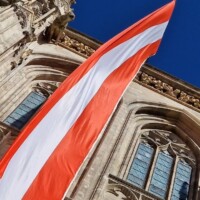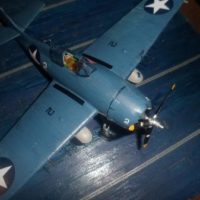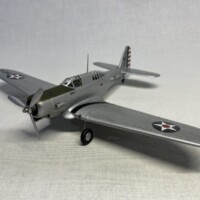Review: TEMCO (North American) TF-51D Mustang trainer
The Airplane:
Throughout the Second World War, one of the major problems facing all air forces was converting a new low-time pilot to a single-seat fighter. All of these aircraft were high-powered and not only difficult but dangerous for a newcomer during their first flying hours in the type. During the war, the Red Air Force created several two-seat conversion trainers for their series of Yak fighters. The Luftwaffe ordered the creation of the two-seat Bf-109G-12 and Fw-190S conversion trainers. After the war, Supermarine developed a two-seat conversion trainer based on the Spitfire IX.
In 1949, North American Aircraft modified two F-51D-25-NT Mustangs as two-seat trainers and offered them to the Air Force as the TF-51D. At that point, the service did not believe there was a need for such a conversion trainer. However, in 1951, the U.S. Air Force changed its position about a two-seat conversion trainer of the F-51D Mustang, which was now considered necessary since the U.S. military aid program was supplying Mustangs to air forces whose pilots had not previously operated such complex aircraft.
TEMCO Aircraft Corporation of Dallas, Texas, was awarded a contract to convert fifteen single-seat F-51D Mustangs into TF-51D two-seat Mustangs for sales to friendly air forces in Central and South America. The company purchased fifteen surplus F-51D-25-NT Mustangs from the US Government to be used in the conversions. These conversions used the North American design, but featured a reshaped and slightly enlarged bubble canopy to afford the back-seat instructor more headroom.
The 15 TF-51Ds were first used by US Air Force Reserve and Air National Guard units that were still operating F-51s. In 1954, several of these ex-ANG aircraft were provided to the Guatemalan, Salvadoran, and Nicaraguan air forces.
In 1967, ten years after creating their civilian P-51 conversion, Trans Florida Aviation was contracted by the Department of Defense to upgrade military F-51Ds for export. These were called Cavalier F-51D Mustangs; nine single seat (F-51D) and two dual-control (TF-51D) aircraft were built. The TF-51Ds were armed with only four instead of six machine guns in the wings and also had retractable tail wheels. Nine - including the two TF-51Ds - were given to Bolivia, under the Peace Condor program.
In the 1980s and 1990s, several civilian F-51Ds were modified to TF-51D configuration by Stallion-51 for use as conversion trainers for civilian pilots who wanted to buy and operate a Mustang warbird. These all have the taller Cavalier vertical fin and also have retractable tailwheels.
The Kit:
This TF-51D kit is the newest conversion kit by Halberd Models in the Ukraine. The kit is released in two options, one kit has Air National Guard decals and the other has decals for Guatemalan and Bolivian TF-51Ds. However, to create an accurate Bolivian Air Force TF-51D, the kit must be modified with the taller rudder and have the tail wheel opening restored for the retractable tailwheel.
As is the case with all the other Halberd conversion kits, the fuselage has surface detail that makes it indistinguishable from the Eduard kit after the model is painted.
Halberd provides an extended canopy made from clear resin that is as thin and clear as the Eduard canopy parts.
This conversion is easier to do than the previous Cavalier Mustang conversions, since all the cockpit side panel detail is now molded in to each fuselage half. With only 14 parts total, this is a simple conversion that would be a good first conversion kit for a modeler.
Construction:
There is nothing difficult about this conversion. I used an Eduard P-51D-5 Overtrees kit for the project.
Halberd provides seat mounts and one seat for the cockpit, with the seat from the Eduard kit also used. An instrument panel, rudder pedals and control stick is provided for the back seat, with the Eduard kit sourced for the front cockpit control stick and instrument panel with forward coaming.
I painted the cockpit flat black overall, since available photos indicate these TEMCO conversions had the cockpit painted black like all other ANG AND usaf Reserve F-51s in use at that time. I used Eduard photoetch seatbelts to finish things off.
One very nice thing about this conversion is that the resin fuselage has the dorsal fin extension molded in, which means you can use any Eduard P-51D kit; this is a good idea, since the finless P-51D-5 is now the most common Overtrees kit available.
Once the fuselage was assembled, I turned to assembling the wings and tail surfaces from the Eduard kit. These were then mated to the Halerd fuselage.
Painting and Decals:
I gave the model a NMF finish, using Tamiya “Gloss Aluminum” lacquer metalizer paint for the wings, and Mr. Hobby Super Metalizer SM-208 “Super Duraluminum” for the rest of the model. I used SN-205 “Super Iron” for the darker panels around the exhausts.
The kit decals for the Indiana National Guard option were used without problem. I chose these because the markings were the more colorful option.
Final Finish:
I assembled and attached the main landing gear and the tailwheel, and the prop and spinner, all from the Eduard kit.
Overall:
This is the first easy TF-51D conversion, and the result looks superb sitting in my collection of Eduard Mustangs. A TF-51D is a “must have” for any serious Mustang Fanatic. This conversion is easy to do and the result is as “guaranteed” as any other Eduard P-51D kit. Recommended for any modeler with experience working with resin parts.



















Beautiful machine Tom
Good review, Tom.
Great review and excellent build, Tom @tcinla
Another Mustang? I'm beginning to get the impression you like the aircraft. Nice work with the conversion - it's a very different model. I'm also surprised it took them until 1949 to come up with it.
Excellent conversion and ditto article, Tom!
That hits a 10 on the Super Cool meter, Tom. I’m very tempted to get one of these.
@tcinla - Great article and great build Tom. The finish looks fantastic.
Excellent build
Another Halberd winner, Tom @tcinla. I just started working on their Piper Enforcer.
Nicely done! A very colorful Mustang.